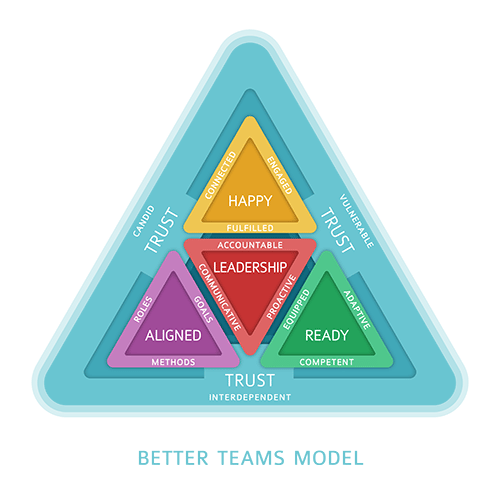Want to build better teams & leaders?
We Provide Tools, Coaching, Training & Meeting Facilitation Services
Better Teams is about building High-Performing & Happy Teams.
Our services, resources and tools are designed to help develop leaders and build strong teams.
Whether you need a quick team energizer, a thorough team assessment, or facilitation training, we’ve got something for you.
Take advantage of our resources so you can offer new and interesting engagements for the teams you work with.
We regularly blog a new team activity or resource you can use for free! Be sure to sign up to get your FREE tools.
Get team activities, tools & resources delivered straight to your inbox
Better Teams Model & Assessment
The Better Teams model provides a clear and visual way to talk about your team dynamics.
You can use the Better Teams model to identify your team’s strengths and greatest opportunities using a common language.
The Better Teams model includes five key areas: Leadership, Trust, Aligned, Ready and Happy. Trust is the large, outer triangle in the model because it is a byproduct of all the other areas.
Each of the five areas has three significant characteristics. These fifteen characteristics are interconnected and often influence each other. For example, if team members are not clear on their roles, they are less likely to be engaged and equipped to be successful.

Check Out Our Core Offerings

We work with you to create custom designed team sessions that cultivate both happy and high-performing teams.

Get personalized, one-on-one or group coaching to improve leadership skills, build self-awareness and achieve personal goals.

Enroll in our highly rated courses on team building and leadership to enhance your skills and capabilities.

Join the Better Teams Community, FORWARD, to network and grow with other experienced team building professionals.
